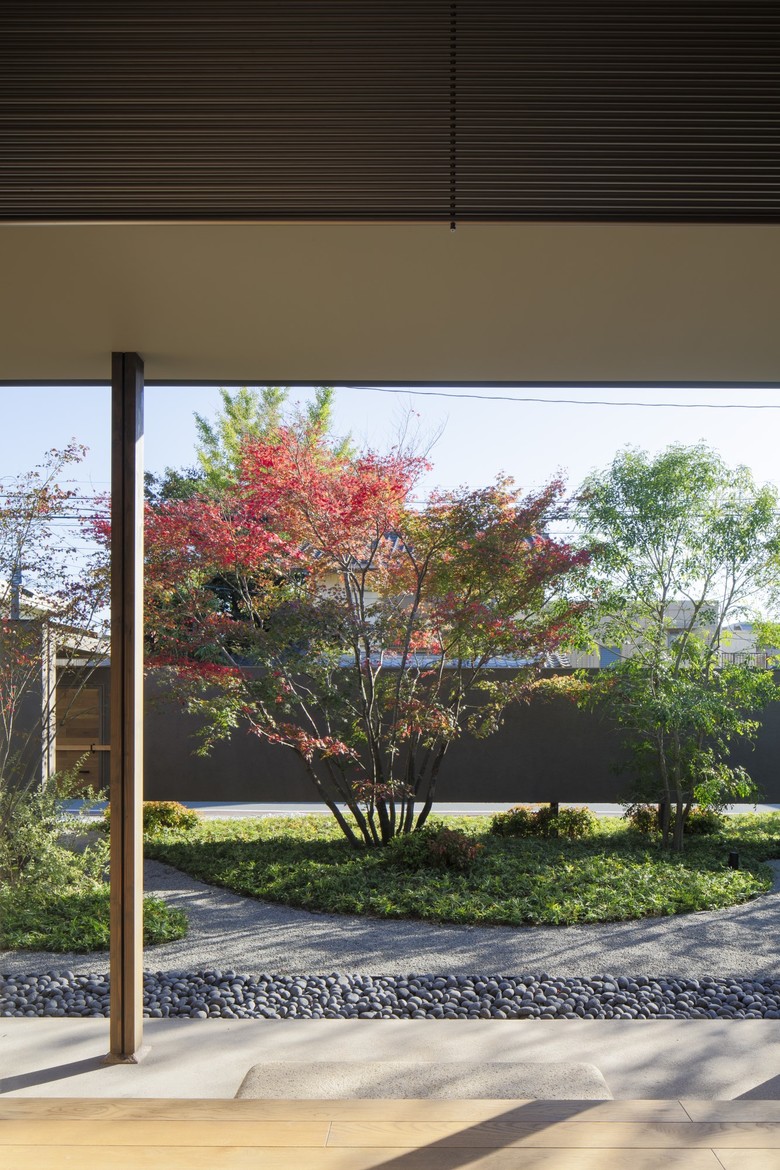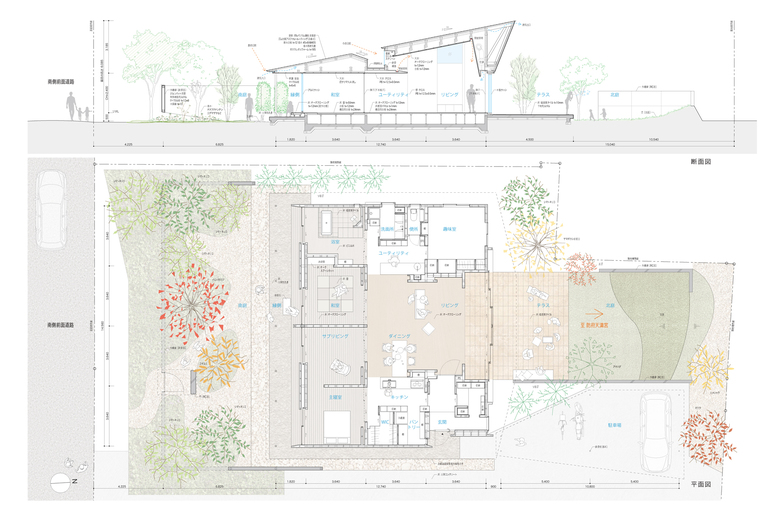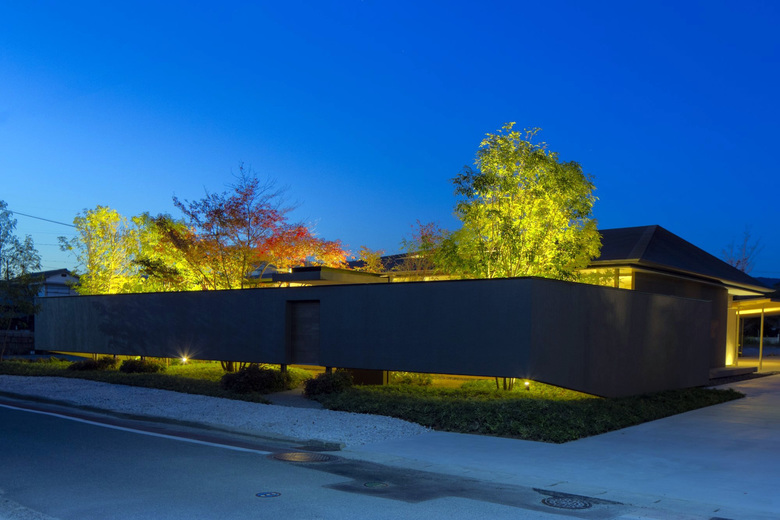Hohu House
A "floating" wall is the most distinctive feature in KEN Architects' design of a house in Hohu, Yamaguchi Prefecture. Far from arbitrary, the wall relates to the public/private nature of the garden behind it, as architect Kenichi Kohmura explains in response to a few of our questions.
Location: Hohu, Yamaguchi, Japan
Client: Withheld
Architect: kenichi kohmura / KEN Architects
Contractor: Meiken Co., Ltd.
Main Construction: Wood
Site Area: 774 m2
Floor Area: 206 m2
The building site is located midway between the train station and the town’s famous Tenmangu shrine. Despite its downtown location just ten minutes on foot from the station, the lot is remarkably large. Another defining feature is the contrast between the busy pedestrian and automobile thoroughfare on the south side, and the sweeping views of Tenmangu and the mountains on the north. By locating the building in the center of the lot and creating very different gardens on the north and south sides, we attempted to connect the residence to the town in diverse ways. Specifically, the south side features a “floating” wall whose color harmonizes with the trees in the garden, evoking a feeling of openness toward both the dynamic townscape on the south side and the interior of the home.
The garden on the peaceful north side features a manmade hill in the garden that shortens the perceived distance to Tenmangu, drawing the gaze in that direction and creating continuity with the green mountains. We utilized a single-story layout with no solid interior partitions so that the residents could enjoy views of both gardens from anywhere in the home. A large roof consisting of a single plane, almost like an extension of the earth, unifies the interior spaces. Extending up and to the north, the roof points both the exterior of the house and the living room in the direction of Tenmangu, the symbol of Hofu.
That the gardens contribute not only to the interior spaces but also to the town itself. The client, a community leader with a deep affection for the area, is constantly thinking about how to contribute to the community. The greenery of the south-side garden overflows toward the road, benefitting the town in that way, and during festivals the gate can be opened so that the entryway serves as a public rest area welcoming in neighbors and friends. In this way, the design promotes connections with the community and its residents.
In order to not simply open the garden to the community but rather to ensure that the residents and passersby would both be able to enjoy the greenery without worrying about invasions of privacy, we installed a garden wall that appears to float. The question of how far above ground this wall should float and how tall it should be in order to maintain a balanced sense of openness was a key design consideration. During construction, we visited the site and made final decisions about the height of the wall and the location of plantings by testing out the impacts on line of site from both inside and outside the property.
I am always conscious of evoking the mood of Japanese architecture in my designs. By mood, I mean texture. Technological advances have led to the industrialization and increased construction efficiency of architecture, but I feel that in exchange we are losing the character of architectural spaces and the communities they comprise. Meanwhile, opportunities to experience two-dimensional spaces through computer graphics and the Internet are constantly increasing. Within this context, I believe that incorporating delicate textures that can only be experienced in the real world both increases the value of the architect and fosters craftspeople in our field.
Email interview conducted by Ryogo Utatsu, Japan-Architects.
Artigos relacionados
-
-
JR Nippo Main Line Kirishima-Jingu Station Renovation
Takuma Kawaguchi Architect & Associates | 03.03.2025 -
-














